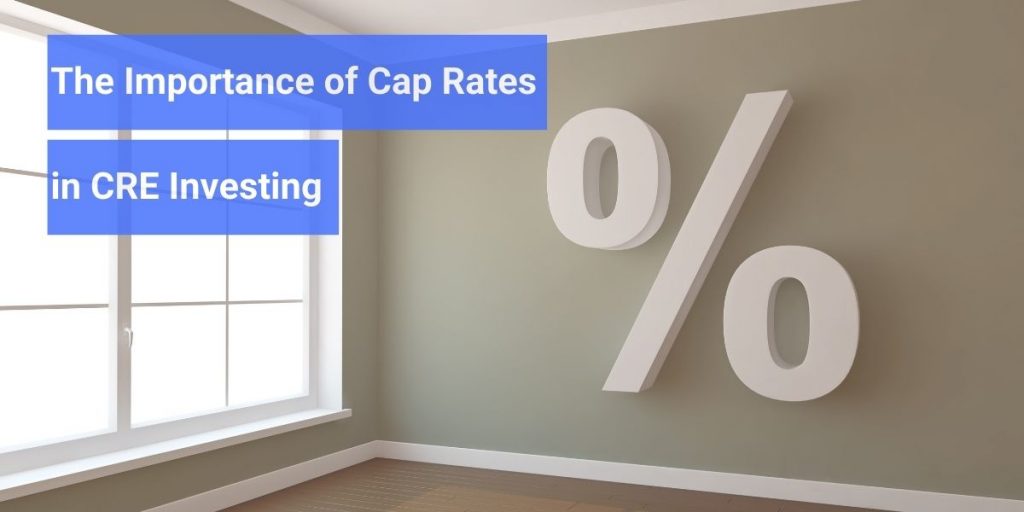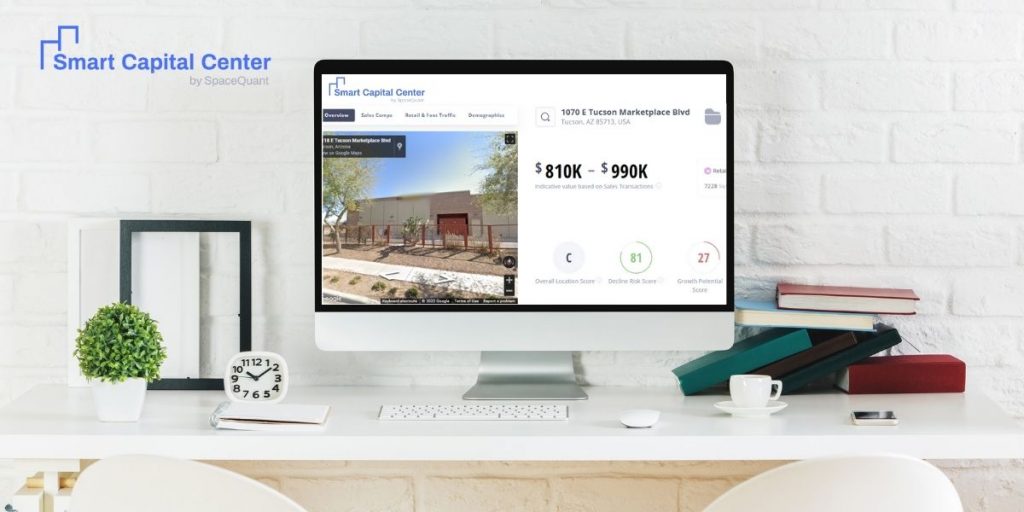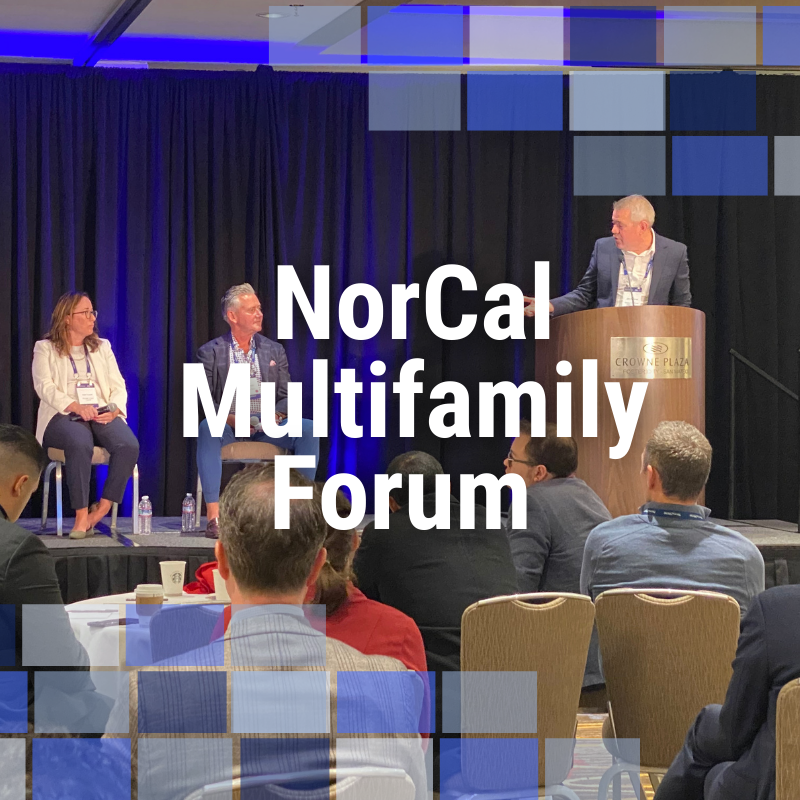The Importance of Cap Rates in CRE Investing and How SCC Helps Investors Determine a Property’s Cap Rate
In Commercial Real Estate (CRE), investors must perform due diligence and conduct a thorough analysis of the prospective property to understand the property’s financial performance and value. This analysis is critical to ensure profitability and generate strong returns. When trying to understand the true value of a property, there are several metrics investors often look…

In Commercial Real Estate (CRE), investors must perform due diligence and conduct a thorough analysis of the prospective property to understand the property’s financial performance and value. This analysis is critical to ensure profitability and generate strong returns.
When trying to understand the true value of a property, there are several metrics investors often look at. Sales comparables are one of the most common metrics used to predict how the prospective property will perform and what the value is.
To generate strong returns, investors would always determine whether a property is valued fairly or not prior to investing. Comparing a specific property to other similar properties is necessary to determine whether a property will be a good investment.
However, due to the relatively complex and illiquid nature of commercial real estate, it is difficult to assess the value of a property.
This is especially true when purchasing or selling properties that aren’t as common such as a large office building or mall, as there may be limited to no comparable assets on the local market. Cap rates serve as an effective comparative tool for investors when evaluating different potential properties.
Capitalization rate, or “cap rate,” is a metric used by investors to evaluate differences across commercial real estate projects and helps indicate the expected rate of return on investment.

The capitalization rate of a commercial property is a fixed value, shown as a percentage, representing the asset’s return over a specific period. The capitalization rate is calculated by dividing the property’s net operating income (gross income minus operating expenses) by the asset’s market value.
CRE investors use the capitalization rate to determine an asset’s risk and possible return. Typically, a cap rate will range from 2% to 20%. An investor would choose a high or low cap rate depending on several factors. Although having a high cap rate indicates a higher yield, it does not necessarily mean that it is more profitable.
The cap rate indicates how long it will take for investors to recover the amount they’ve invested. Investors accept a lower cap rate if they believe that the income generated by a property will be significantly higher in the future; a great example of this are coastal supply-constrained markets. On the other hand, investors would usually accept a higher cap rate if they don’t see much growth potential in the property; low-density middle America markets are an example.
Multifamily properties have the lowest cap rates because it is the least volatile. In contrast, hotels have the highest cap rates due to the elasticity of demand and the fluctuation of income based on the economic cycles. Multifamily cap rates also vary depending on the location. For example, investors would often see cap rates as low as 2.5% for multifamily properties located in Los Angeles, while the multifamily cap rates in Decatur, Illinois, go as high as 12%.
However, even if a multifamily property has a 12% cap rate, it is still a great buy even if the interest rates are at 6-7%. On the other hand, if the cap rate is 2.5%, even in a great market such as Los Angeles, in a good neighborhood, if the credit is priced much higher, most investors would most likely be discouraged from purchasing the property. A smart investor should have a sound strategy to effectively get a reasonable return on investments (ROI).
Additionally, low-income areas with high crime rates outside section 8 have higher cap rates. This is because low-density locations with lower incomes have minimal chance of growth and are riskier. Therefore, these properties have higher cap rates.
As with any real estate investment, the profitability of a property depends on the level of risk and the quality of the property.
While cap rates aid in understanding a property’s potential for investors, they don’t always represent value. In contrast, it is better to use cap rates as a benchmark for comparable properties. Even if a particular deal doesn’t go through, keeping that cap rate provides context for comparison and analysis in the future.
Great investors should be able to determine when a property is mispriced when the offered cap rate is too high compared to property risk and vice versa; it’s most likely an indication that a property is not valued correctly.
Smart Capital Center (SCC) provides investors with independent property valuation and extensive property and market analysis within 24 hours of submitting their documents. With the valuation report, SCC does the work for you and sources the most relevant cap rates for your deal.
SCC’s intuitive system automatically computes a property’s cap rate on our listings, which allows users to view cap rates near their potential investment.
When it comes to property valuations, one problem investors face is appraisers who are biased and give wrong property valuations. Investors can use different cap rates based on different assumptions with SCC’s system. With Smart Capital’s easy-to-use software, investors can see their cap rates and change them accordingly.
SCC has comprehensive insight on cap rates as we work with brokers, lenders, and property owners. We evaluate cap rates for each project daily. Smart investors work with SCC to find great deals and get returns even in today’s volatile market.
How to Calculate the Cap Rate

The capitalization rate can be calculated in a couple of ways. The most used formula involves dividing the property’s net operating income (NOI) by its current market value to get the capitalization rate of a real estate investment. (Capitalization Rate = Net Operating Income / Current Market Value)
The Net Operating Income is calculated by subtracting gross operating expenses (expenses required to manage the property) from the gross operating revenue generated from the property (such as rentals). These costs include property taxes and the amount spent on the property’s ongoing maintenance.
Operating expenses include the costs of running and maintaining the property, such as insurance premiums, legal expenses, utility charges, property taxes, maintenance costs, and janitorial services. However, the calculation excludes expenditures, such as the cost of installing a brand-new air conditioning system throughout the entire structure.
Meanwhile, real estate income includes rental income, parking fees, service changes, vending machines, washing machines, etc.
The asset’s current market value is its current price determined using current market rates. The market rate, also commonly referred to as the “going rate,” is priced according to the state of the free market instead of a fixed rate by a state authority. If the product or service is in demand, the market rate increases. Contrarily, if the demand decreases, the market rate is also reduced.
A property’s risk level can be inferred from its capitalization rate, which might vary from one property to another or from one time period to another for the same property. Analyzing the formula reveals that the cap rate value will be higher for properties with higher net operating income and a lower valuation, and vice versa.
Cap rates undoubtedly depend on current market conditions and change according to the state of the economy. When the economy is doing well, personal income rises, and consumer spending rises, which boosts CRE property revenues and, in turn, market value. Conversely, when the economy is doing poorly, people tend to conserve money rather than spend it, which lowers the amount of money that hotels, shops, and other CRE property types may make.
Several macroeconomic factors also influence cap rates. For example, supply-chain issues can significantly affect cap rates for buildings in the retail and industrial sectors since increased transportation costs and a lack of manpower hinder tenants’ capacity to generate revenue and make lease payments on commercial assets.
Low tenant occupancy reduces the amount of net operating revenue on a property and, as a result, causes cap rates to fluctuate in the commercial sectors. On the other hand, existing CRE assets will cost more if occupancy is high and the supply of CRE assets is limited, which will have an impact on cap rates.
Smart Capital Center Computes Cap Rates for Investors

Although cap rates assist investors in assessing a property’s potential, they don’t always represent its full value. Cap rates have some notable limitations, including their inability to account for mortgages or other forms of debt financing. Instead, it considers a cash purchase. In addition, because net operating income fluctuates as rents rise, new tenants sign, and operational costs rise, cap rates are not fixed.
It’s vital for investors to accurately determine a property’s value to make smart investment decisions. However, analyzing income and cash flows is a tedious and often time-consuming process. It would typically take investors days to weeks before receiving a detailed financial analysis of their prospective property.
SCC’s intuitive system automatically computes a property’s cap rate on our listings, which allows users to view cap rates near their potential investment. One issue investors encounter when it comes to property valuations is appraisers that provide biased and inaccurate property valuations. SCC’s system enables investors to apply different cap rates based on different assumptions. Smart Capital’s straightforward software lets investors view and adjust their cap rates accordingly.
With the help of Smart Capital Center, investors will have all the information they need to make secure, financially lucrative investments. Smart Capital Center is here to support investors in making informed investment decisions so they may get ahead of the market and secure deals faster by providing ultra-fast property valuation and affordable property financing.



